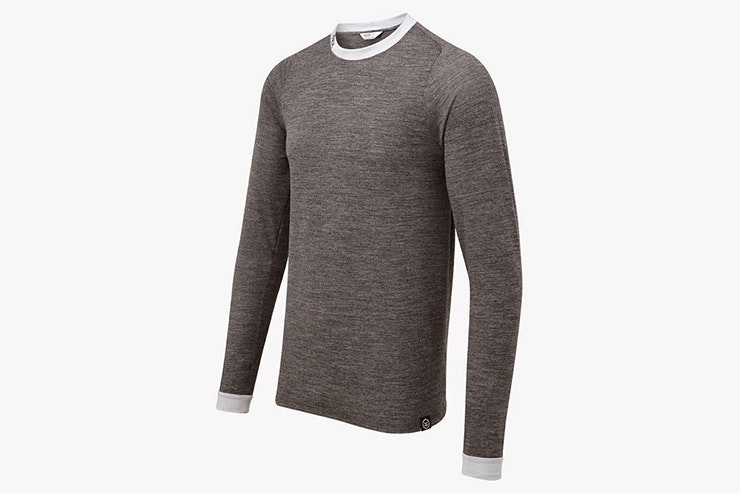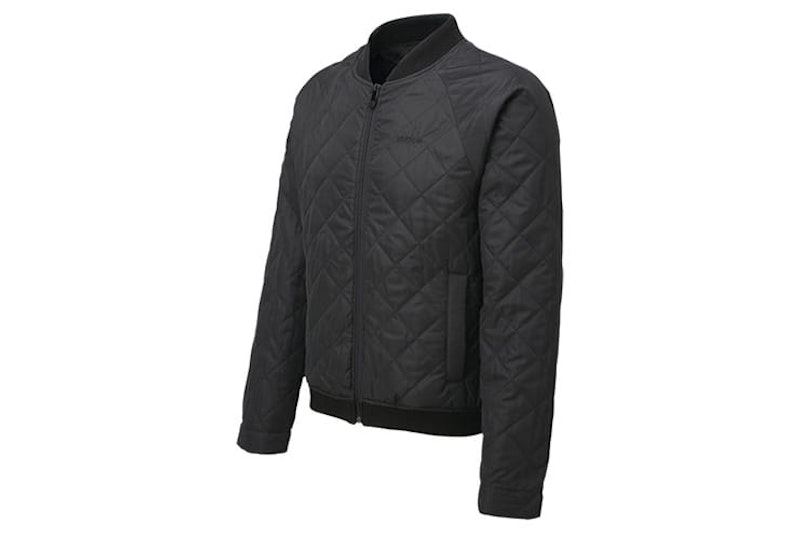Wintry weather isn’t stopping hardy British bikers from getting their two-wheel fix, it would seem. A quick poll on the BikeSocial homepage revealed only 5% of you tuck the bike away and stick to the car during the chilly season. Just under three-quarters of you (72%) get the bike on on the occasional dry/sunny day and an impressive 22% ride whatever the weather.
A survey by British clothing and protection specialists Knox threw up some very interesting stats too*. Three quarters of those who took part in their Cold Killers Winter Riding Survey said they ride all year round; braving chilly conditions to stay on two wheels, both when commuting and riding for fun.
Around a third said they had to reduce journey times to cope with the conditions though, and a worrying two thirds said they became so cold they had to stop and warm up. Three-fifths (60.4%) experienced physical pain caused by cold, the same number said they struggled to operate their machine’s controls, and nearly a third lost concentration.
Knox say the rider's responses suggest this may simply be down to the choice of and type of riding kit used. Despite the broad choice of dedicated winter kit riding available, less than half of those questioned (45%) choose to use it, instead wearing the same clothing all year round - time spent getting ready and the bulky, restrictive feel of some winter garments putting them off.
For those who did change their riding kit to suit the cold, thicker/more insulated motorcycle jackets, trousers and gloves proved the most popular solution. A fair number of those riders complained that cold weather kit was uncomfortable and made it difficult to move around on and off the bike.
What's the secret to staying warm on a motorbike?
It's at this point people usually start piping up about the brand of suit they swear by, and that they've never been cold or wet. Yes, winter riding kit is steadily improving: waterproofing is getting better, liners are getting thinner and less restrictive, and heated kit is getting more sophisticated, but not all of us are lucky enough to be able to spend £1,500 on the latest Scandinavian super suit.
And no matter how good your winter jacket and trousers are, do you really want to walk about in them when you get to work/the pub/etc? Can you really be bothered to start unzipping thermal inners and shoving them in your bag? There is another way...
Kevin and Julia Sanders are double world record holders for the fastest circumnavigation of the world by motorcycle and the trans-Americas by motorcycle, and founders of GlobeBusters motorcycle expeditions. They've taken hundreds of riders on dozens of trips, through just about every country on earth. From searing desert heat to arctic circle cold there aren't many temperature and weather extremes they haven't ridden through:
“Most of us have encountered riding through four seasons in one day. Even the basics of riding up and down the Alps can take you from bright warn sunshine to snow-lined roads. Invariably trans-continental rides are going to encounter all extremes. Take the trans-Americas; Alaska to Canada, through the USA into Mexico, Columbia and Peru, and finally Chile. That’s sub-zero winds, snow and ice, torrential rain and humidity, rubber-melting heat and everything in-between.”
It’s taken us years to figure out what works best for us, and I stress for us because riding gear is a personal choice, but layering has proved a successful method for hiking, skiing and climbing for years and we don’t see that motorcycling is any different. Besides, there’s no suit in the world that can deal with those extremes and still be 100% practical off the bike.”
How do you layer clothing to keep warm?
At its most basic level, the layering system consists of three elements:
The baselayer
The midlayer
The outer layer
Depending on the conditions and how effective your outer layer is – we'll come onto that shortly – Kevin and Julia recommend four. And before you start worrying about your bank balance, they don't all have to be the latest budget-busting, bike-specific kit either.
The base layer:
“Perhaps the most important, as it needs to keep the skin dry: vital for comfort in all conditions. The importance of a non-cotton base layer cannot be stressed enough. Cotton can absorb up to ten times its own weight in water or perspiration and takes forever to dry, making it dangerous, as it can accelerate heat loss. Go for something technical or merino wool instead. Merino is expensive, but it’s a superb temperature regulator and naturally breathable.”
The mid-layer:
This layer traps warm air next to the body, the logic being if your core is warm your extremities will be too. It can be wool, polyester fleece, down, or synthetic insulation, like those found in sleeping bags. “We usually go for fleece, as it’s lightweight, easy to care for and comfortable, but down and synthetically-insulated tops can also do the job. If you can go for the wind-breaker variety, which as the name suggests, helps lessen the effects of wind. External wind that is.”
The outer layer:
Next is the outer or motorcycle layer, Kevin and Julia say careful choice is needed here too: “Steer clear of the cheap-and-cheerful-black-and-grey-with-detachable-liner textile and go for something more adventure or touring-focused. If it has a separate waterpoof liner, chuck it out. Having it on the inside means the outer bit gets soaked and is difficult to dry out. Ditch the thermal inner too; your mid-layer top and a pair of trekking-type trousers (not jeans) will do the same job. Go for adjustable neck and cuffs, and find one with venting, preferably on the front, back, arms and legs. If it warms up, you can go with just the base layer and open the vents. When it goes cold, close them and add the mid-layer.”
The fourth layer:
If it’s very cold or wet – or you can't afford to or don't really want to upgrade your riding jacket and trousers – a fourth, waterproof outer layer will keep you dry and act as a wind-stopper. It can be either one piece or two, depending on your preference, but make sure it's GoreTex – or similar – for the additional breathability.
What other kit do you need for a warm ride?
“We usually advise going for a flip-up helmet, they’re a good compromise between safety and the ability to interact with people without having to take it off and get a cold, wet head. We change our visors, or put in pinlock style inserts, to prevent misting-up too.
Fill the gap between the helmet and jacket with a good neck-warmer or balaclava, and get some glove liners – they're available for little money these days – to pop on when it goes really cold. If you can, take two pairs of riding gloves along in case one pair gives out to the rain.”
Then there are the feet. Julia says: “I wince when I see riders in light, soft riding boots and when I look back at photos of me and Kevin riding around South America in hiking boots. Kevin goes so far as to wear motocross boots; I wear something slightly less severe. Buy on the big size, to allow room for thick socks. And if they’re not 100% waterproof, buy some socks that are.”
Kevin and Julia add: “The real beauty of separate layers is that you can mix and match to the conditions and wear them off the bike, in turn reducing the amount of clothing you have carry with you and meaning you don't have to walk around in heavy, uncomfortable, wet riding kit all day too. A good base layer will act as T-shirt/top; a separate fleece or down jacket insulates under your riding jacket and on chilly bike meets or evenings to the pub; a waterproof over jacket can also be used for a rainy day off the bike. Simple really.”
Find out more about GlobeBusters and their incredible trips and expeditions here: www.globebusters.com
What should I do if I get really cold?
Caught out in the cold? The petrol station is full off stuff to help get you home and dry, here's Kevin and Julia's top tips for emergency warming:
Newspapers, foil emergency blankets or even plastic bags can be stuffed down your jacket – and anywhere else that's safe and decent – for extra insulation. Bags over your socks will also help keep your feet dry.
Cold legs? A pair of thick ladies tights will act as a kind of base layer.
If they sell rubber washing up gloves in the shop, stretch them over the top of your gloves for a water/wind-proof barrier. If they don't sell them/you can't face the embarrassment, the latex/plastic gloves that can be found at diesel pumps do the same job underneath your gloves.
Cut the drafts out of your kit: you can wear as many layers as you like, but if you don't seal in the warm air they won't work. Make sure everything is tucked in and Gaffer tape any holes you can't plug.
Put something warm in your core: have a hot meal or snack and make it something energy rich, like pasta.
Make good use of the handwarmers in the loo, for a quick blast of warmth in your kit.
No garage in sight? Get your circulation going: get off and walk around, do a few press-ups or run on the spot. This will get the blood flowing from the core out to the extremities.
Put a warm hand/foot in a warm glove/boot: get them on your exhaust or engine block or hold each one over the exhaust and rev the bike, before you put them on.
British motorcycle armour and clothing specialists, Knox, use the layering concept in their Studio Collection: a range of motorcycle jackets, armoured shirts, base and mid-layers that are designed to be worn together, on and off the bike.
We reckon a few manufacturers might follow this lead, so expect to see more multi-purpose and adaptable bike clothing like this. See the Knox Studio collection at www.planet-knox.com
Notes:
*Cold Killers' winter riding survey 2011 Key findings -
74.8% ride during winter (December-February).
34.3% limit journey time/distance in cold conditions.
65.1% have had to break their journey to warm up.
60.4% have experienced physical pain and struggled to operate machine controls due to the cold.
29% use thermal base layers.
37.4% rely on thicker/more insulated motorcycle jacket/trousers/gloves.
38.1% find winter clothing bulky and uncomfortable, making it difficult to move around on or off the bike.

